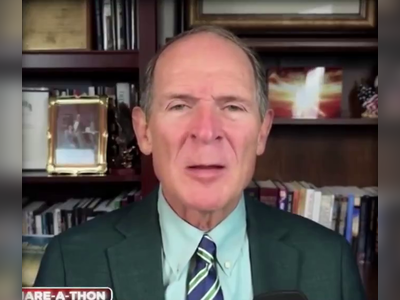Global Inflation Rates Show Diverging Trends Amid Ongoing Economic Turbulence
The latest data indicates varied inflationary pressures across major economies, with some regions seeing stabilization while others struggle with rising costs.
Recent inflation data from major global economies reveals a complex picture of rising and stabilizing price levels, reflecting the divergent economic conditions influenced by supply chain disruptions, energy prices, and monetary policy responses to the COVID-19 pandemic.
In the United States, the Consumer Price Index (CPI) for August increased by 3.7% year-on-year, slightly up from 3.2% in July.
This uptick has been attributed to higher gas prices and rent costs, despite core inflation, which excludes volatile food and energy prices, remaining unchanged at 4.3%.
The Federal Reserve's ongoing efforts to manage inflation through interest rate hikes have led to a consensus that additional increases may be on the horizon, depending on forthcoming economic indicators.
In the Eurozone, inflation decreased to 5.2% in August, a decline from 5.3% in July.
The European Central Bank (ECB) remains cautious as energy prices have started to decline, aiding in the moderation of inflationary pressures.
However, the persistence of high food prices continues to challenge economic stability in some member states, prompting discussions over possible adjustments to the ECB's monetary policy stance.
In contrast, the United Kingdom's inflation rate rose to 6.7%, driven primarily by rising food prices and increased transportation costs.
This rise has prompted the Bank of England to consider further increases in interest rates as part of its strategy to combat persistent inflation, with concerns that the current economic growth may not be sufficient to outweigh inflationary pressures.
Meanwhile, in emerging markets, countries like Brazil are experiencing a cooling of inflation rates, with August figures showing a drop to 4.5%.
Brazil's central bank has been proactive in adjusting interest rates, which has helped stabilize the economy, but inflation remains above the target range.
Inflation in Asia presents varied scenarios as well, with Japan recording a multi-decade high inflation rate of 3.2% in July, raising questions about the effectiveness of its longstanding low interest rate policy.
Conversely, countries like China are witnessing deflationary signals, where consumer prices have decreased for the first time since late 2020, leading to concerns about economic recovery and the potential for further stimulus measures by policymakers.
The World Bank has indicated that, while advanced economies begin to show signs of stabilization, the path to recovery remains fraught with challenges, especially for developing nations heavily reliant on commodity exports.
The ongoing geopolitical tensions and the energy crisis exacerbated by the conflict in Ukraine further complicate the global economic landscape, contributing to uncertainty about future inflation trends across different regions.
In the United States, the Consumer Price Index (CPI) for August increased by 3.7% year-on-year, slightly up from 3.2% in July.
This uptick has been attributed to higher gas prices and rent costs, despite core inflation, which excludes volatile food and energy prices, remaining unchanged at 4.3%.
The Federal Reserve's ongoing efforts to manage inflation through interest rate hikes have led to a consensus that additional increases may be on the horizon, depending on forthcoming economic indicators.
In the Eurozone, inflation decreased to 5.2% in August, a decline from 5.3% in July.
The European Central Bank (ECB) remains cautious as energy prices have started to decline, aiding in the moderation of inflationary pressures.
However, the persistence of high food prices continues to challenge economic stability in some member states, prompting discussions over possible adjustments to the ECB's monetary policy stance.
In contrast, the United Kingdom's inflation rate rose to 6.7%, driven primarily by rising food prices and increased transportation costs.
This rise has prompted the Bank of England to consider further increases in interest rates as part of its strategy to combat persistent inflation, with concerns that the current economic growth may not be sufficient to outweigh inflationary pressures.
Meanwhile, in emerging markets, countries like Brazil are experiencing a cooling of inflation rates, with August figures showing a drop to 4.5%.
Brazil's central bank has been proactive in adjusting interest rates, which has helped stabilize the economy, but inflation remains above the target range.
Inflation in Asia presents varied scenarios as well, with Japan recording a multi-decade high inflation rate of 3.2% in July, raising questions about the effectiveness of its longstanding low interest rate policy.
Conversely, countries like China are witnessing deflationary signals, where consumer prices have decreased for the first time since late 2020, leading to concerns about economic recovery and the potential for further stimulus measures by policymakers.
The World Bank has indicated that, while advanced economies begin to show signs of stabilization, the path to recovery remains fraught with challenges, especially for developing nations heavily reliant on commodity exports.
The ongoing geopolitical tensions and the energy crisis exacerbated by the conflict in Ukraine further complicate the global economic landscape, contributing to uncertainty about future inflation trends across different regions.
AI Disclaimer: An advanced artificial intelligence (AI) system generated the content of this page on its own. This innovative technology conducts extensive research from a variety of reliable sources, performs rigorous fact-checking and verification, cleans up and balances biased or manipulated content, and presents a minimal factual summary that is just enough yet essential for you to function as an informed and educated citizen. Please keep in mind, however, that this system is an evolving technology, and as a result, the article may contain accidental inaccuracies or errors. We urge you to help us improve our site by reporting any inaccuracies you find using the "Contact Us" link at the bottom of this page. Your helpful feedback helps us improve our system and deliver more precise content. When you find an article of interest here, please look for the full and extensive coverage of this topic in traditional news sources, as they are written by professional journalists that we try to support, not replace. We appreciate your understanding and assistance.










